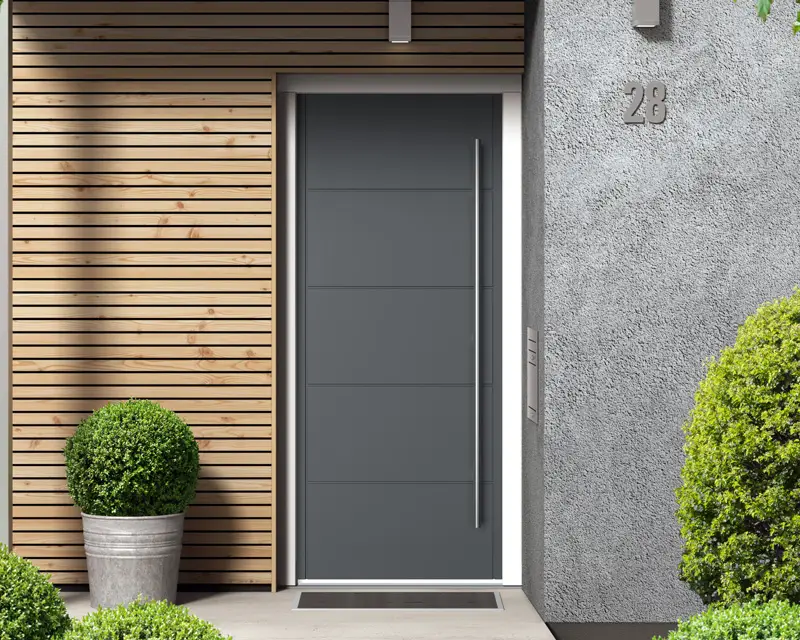Perfect Fit: The Ultimate Guide to Standard Door Sizes in the UK
Choosing the right door size is essential for proper fit, smooth installation, and a consistent visual finish throughout your home. In the UK, using standard door sizes makes replacing doors easier, reduces labour costs, and avoids unnecessary structural changes. Whether you're renovating, building new, or simply upgrading a tired entrance, knowing what sizes are commonly used gives you confidence to choose wisely.

Standard Front Door
Why Understanding Standard Door Sizes Matters
Standard door sizes in the UK have been developed over time to meet practical needs in most homes. When doors conform to these sizes, they’re easier to source, install, and match with pre-made frames and hardware. Using non-standard sizes can result in additional costs, delays, or the need for custom manufacturing—especially when sourcing replacement panels for older properties.
The Most Common External Door Size in the UK
The most widely used external door size in the UK is 1981mm high by 838mm wide and 44mm thick. This size is considered standard for front and rear entrance doors and is compatible with most uPVC, timber, and composite door styles. The 44mm thickness also meets structural and thermal insulation standards required by building regulations for exterior doors.
Alternative External Door Widths
While 838mm is the most common width for external doors, homeowners may encounter other common variations such as 762mm or 914mm. Narrower doors are often found in older homes or tight spaces, while wider doors offer better accessibility and a more spacious feel. Regardless of width, the standard height typically remains at 1981mm.
Standard Internal Door Sizes
Internal door sizes vary more widely depending on the room type and function. The most common internal door height is also 1981mm, although 2040mm is sometimes used in modern homes for a more contemporary look. Internal door widths usually fall into a few key categories:
610mm - Often used for cupboards or storage rooms
762mm - Common in bathrooms, smaller bedrooms, and tight corridors
838mm - Standard for most internal doors in bedrooms, living rooms, and hallways
Internal doors are generally 35mm thick, making them easier to handle and fit than heavier external panels.
Height and Thickness Overview
The typical UK door height is 1981mm, although 2040mm tall doors are increasingly popular in newer developments. The thickness of internal doors is usually 35mm, while external doors are most commonly 44mm to provide extra strength, insulation, and durability against the elements.
Why Standard Sizes Are Important
Using standard door sizes benefits homeowners, suppliers, and installers alike. For property owners, it means better availability, quicker installation, and lower costs. For tradespeople, it streamlines installation and helps reduce on-site complications. For suppliers and manufacturers, it ensures a consistent stock of popular sizes ready to meet demand.
How to Measure Your Door Correctly
Before buying a replacement door, always measure your existing frame accurately. Measure the width and height of the opening, as well as the depth of the door. Never assume your current door is standard—older properties often have custom-built frames that differ from today's common sizes. Confirm your measurements in millimetres and consult with a door supplier if you're unsure which size best matches your frame.
Door Sizes and UK Building Regulations
While private homes are not strictly required to follow specific door sizes, there are general guidelines and accessibility standards that affect door dimensions. For example, a minimum width of 838mm is typically recommended for wheelchair access. External doors must also meet requirements for weather resistance and energy performance, which is more easily achieved with standard 44mm thick doors.
Custom Doors for Non-Standard Openings
If your opening doesn't match any standard door sizes, custom door manufacturing may be necessary. Many companies offer bespoke timber or composite doors made to fit unusual spaces. Keep in mind that custom doors usually come at a higher cost and longer lead time, but they provide the flexibility to suit older buildings or unique architectural designs.
Conclusion
Knowing the standard UK door sizes-such as 1981mm x 838mm x 44mm for external doors and a range of 610mm to 838mm for internal doors-can save time and money when planning a renovation or new build. Standard dimensions ensure easier sourcing, smoother installation, and better compatibility with existing frames and hardware.
For homeowners looking to upgrade or replace doors, working within these common dimensions offers a hassle-free path to a perfect fit. If your property requires a custom size, professional glaziers or door manufacturers can help create a bespoke solution tailored to your space.
Need advice on choosing the right size or style of door? Contact your local glazing and door specialist for expert guidance and installation services tailored to your home.













Great post! Glazing is such an important aspect of both aesthetics and energy efficiency in modern buildings. It’s amazing how the right glass choices can completely transform a space while also improving insulation and reducing noise. Thanks for sharing!